FREQUENTLY ASKED QUESTIONS
Answers to some common questions
General
Peru is a country with over 5,000 years of history. In addition to the Inca Empire, our land was home to ancient civilizations such as Caral, Mochica, Chavín, Nasca, Paracas, and Kuélap, among others.
We are one of the most diverse nations on the planet, with 84 of the world’s 117 life zones. Here, you can go from desert landscapes to towering mountains and then to a vibrant, lush jungle in an instant.
Our country is also known for its world-renowned cuisine, filled with rich aromas, flavors, and colors, making it one of the best in the world. Peru boasts immense cultural wealth, reflected in more than 50 native languages still in use, ancestral traditions, intricate ancient dances, and a wide variety of musical rhythms echoing through valleys and mountains.
Most citizens of countries in the Americas and Western Europe do not need a visa to enter Peru. Citizens of Argentina, Brazil, Paraguay, Uruguay, Ecuador, Colombia, Bolivia, Venezuela, and Chile can enter using their national identification document.
If you are visiting for tourism, the permitted stay is 90 days, which can be extended by the immigration authority.
It is recommended to travel with light luggage, such as backpacks or medium-sized suitcases, with a maximum weight of 10 kg (22 lbs) per person.
For tours to Machu Picchu that include train service, luggage is limited to a maximum of 5 kg (11 lbs) per person.
The rest of your travel luggage can usually be stored at your hotel, while your personal backpack can remain in the transport under the care of our drivers.
For domestic flights within Peru, carry-on luggage is limited to 8 kg (18 lbs), and checked luggage is limited to 23 kg (50 lbs).
Banks are generally open Monday to Friday from 9:00 AM to 6:00 PM, and most also operate on Saturdays until noon. ATMs can be found in nearly all cities across the country and are mostly connected to Visa, Mastercard, and American Express networks, among others. You can withdraw money in Peruvian soles, U.S. dollars, euros, and other currencies, though fees and commissions may apply. Currently, ATMs from Banco de la Nación (Multired) offer the lowest withdrawal fees.
Peru’s official currency is the Sol (S/.), with coins available in denominations of 10, 20, and 50 céntimos, as well as 1, 2, and 5 soles. Banknotes come in 10, 20, 50, 100, and 200 soles. You can exchange U.S. dollars or other foreign currencies at conventional exchange houses. U.S. dollars are also widely accepted, especially in Cusco.
No vaccines are required to enter Peru. However, if you plan to visit the Amazon region, the Ministry of Health recommends getting vaccinated against hepatitis B and yellow fever. The yellow fever vaccine should be administered at least 10 days before travel to be effective.
You can visit Peru year-round; however, if you plan to visit Machu Picchu in Cusco, it’s important to consider the rainy season in the Andes, which runs from December to March, with February being the most challenging month.
On the other hand, the dry season begins in late March and extends until November. Additionally, the peak months of Cusco’s high tourist season are June, July, and August, meaning prices are higher, and it is highly recommended to book services well in advance.
You can travel to Peru with pets, but they must have an Export Certificate and a Veterinary Certificate confirming their health, vaccinations, and deworming. These documents must be issued no more than 10 days before travel.
Rabbits from Spain are prohibited, and for other animals, such as ferrets and birds, a Sanitary Import Permit and a Health Inspection by SENASA upon arrival in Peru are required.
Nowadays, these types of transactions are very common and increasingly secure. Most companies offer this service with the necessary minimum security measures; however, it is always up to the traveler to assess and trust the appropriate entity or service provider.
Another important detail is that many platforms, stores, or businesses may charge an additional fee of 5% to 10% as a commision. In Peru, processing and cashing out electronic payments can still be costly and challenging, so you may encounter this requirement.
Peru uses Type A and C plugs, with a voltage of 220V and 60 hertz. You may need an adapter if you’re coming from a country with a different plug type. If you plan to use a 110-volt device, we recommend bringing or purchasing a voltage adapter to protect your equipment. Some laptops and cameras now have dual voltage, but it’s always best to check beforehand.
Peru uses three types of plugs: two flat prongs, two flat prongs with a round grounding pin, and two round prongs.
If you’re coming from a country with a different plug type, you will need an adapter, which can be easily found at hardware stores or shopping centers.
We highly recommend purchasing travel insurance to ensure coverage for accidents and common risks.
Travel insurance policies vary widely, but they generally cover medical expenses, accidental death, disability, and unexpected incidents during your trip, such as flight delays, lost or delayed luggage, and theft. Coverage options depend on the maximum insured amount, the duration of the trip, and whether the policy is individual or family-based.
Peru has a renowned cuisine that allows you to enjoy an incredible variety of flavors and textures every day. Don’t miss out on ceviche, lomo saltado, ají de gallina, causa limeña, rocoto relleno, and, of course, the national drink: the pisco sour.
Contenido del conmutador
There are several options: interprovincial buses, domestic flights, taxis, and trains. Interprovincial buses are affordable and, above all, of very high quality, but flights save time on long distances.
About the tour
In Peru, you can book both group and private tours. Group tours are the more affordable option, while private tours offer greater comfort and flexibility.
For tours in Cusco, especially to Machu Picchu, it is recommended to book up to six months in advance, particularly during the high season (April to October), as tickets tend to sell out quickly and unexpectedly.
We recommend visiting Machu Picchu and the Peruvian Andes between April and November, as these are the dry season months (with little to no rain). However, this is also the high tourist season, so it’s advisable to book all services (tours, hotels, transportation, etc.) well in advance.
Machu Picchu tickets are sold by the Ministry of Culture of Cusco and have fixed prices in Peruvian soles. As of now, the price is S/ 152 (approximately $45 USD), though this may vary due to fluctuations in the exchange rate.
Additionally, you can purchase tickets for one of the optional hikes to Huayna Picchu or Montaña Vieja (Machu Picchu Mountain), but availability is even more limited, so it’s recommended to check in advance.
The BTC (Boleto Turístico Completo) is a ticket that grants access to 16 different tourist attractions in the Cusco region.
The price for foreign visitors is $38 USD, while university students pay $19 USD. For Peruvian nationals or foreigners with a Carnet de Extranjería, the full ticket costs S/ 70, and for minors and university students, it costs S/ 40.
This ticket can be purchased at the entrance of any included attraction.
If you are traveling during the dry season (April – November), you won’t need rain gear, but you should bring warm clothing (jackets, base layers, hats, gloves, and scarves), especially if visiting between June and August, as nighttime and early morning temperatures can drop to 0°C (32°F).
If you are visiting Cusco and Machu Picchu during the rainy season (December– March), it is recommended to bring waterproof clothing in addition to wind-resistant attire.
In the Peruvian Andes, it’s always a good idea to carry some warm clothing, as temperatures can change drastically, and strong winds are common, even on sunny days.
For jungle tours, in addition to sunscreen and mosquito repellent, it’s best to wear lightweight, long-sleeve shirts and pants to protect against scratches and insect bites.
Other essentials include a hat, sunglasses, sunscreen, and insect repellent to stay comfortable throughout your trip.
When choosing a backpack, consider the type of tour or activity you will be doing. Travel backpack sizes are measured in liters, and stores typically offer options labeled 30L, 40L, 50L, 70L, or more.
For example, if you are doing the Inka Jungle tour or a similar trek, a 50L backpack is recommended. Keep in mind that you will be carrying it for most of the journey, so selecting the right size is important.
Recommended Sizes:
- Women: 40L to 55L
- Men: 50L to 65L
Features of a Good Backpack:
A well-designed backpack should transfer weight from your back, spine, and shoulders to your legs for better balance and comfort.
Recommended Features:
✔ Waterproof
✔ Internal carbon frame for stability
✔ Durable material
✔ Easy access to main compartment
✔ Double zippers for security
✔ Padded hip belt, straps, and shoulder harness
✔ Ventilated back padding for airflow
✔ Hydration bladder compartment (with a drinking hose)
Choosing the right backpack will make your trek much more comfortable and enjoyable!
Any of these optional mountains must be reserved at the same time as your entry ticket to the Machu Picchu archaeological complex, as they are not sold separately but are connected to the Machu Picchu ticket.
Huayna Picchu (2,720 meters above sea level) is the most famous and in-demand mountain, as it was the first discovered and contains significant archaeological remains. However, it’s worth noting that during the rainy season and for those who suffer from vertigo, it may not be the most recommended option. Only 400 people are allowed to enter per day, divided into two groups of 200. If you wish to include this mountain in your visit, it is recommended to book well in advance (approximately 3 months prior). The ascent takes about 1.5 hours, and the descent typically takes 1 hour.
Old Mountain, also known as Machupicchu Mountain, is the other alternative and, for many, the better option. This mountain requires a longer hike (approximately 2 hours to ascend), but it is worth it as the view of the complex and the entire valley is spectacular. From there, you can also capture the classic shots of Machu Picchu and Huayna Picchu together.
Peruvian food is very diverse, and within the tours, a combination of international cuisine and dishes based on typical Peruvian gastronomy is regularly offered. Fruits such as apples, oranges, peaches, tangerines, avocado, and bananas are commonly available.
If you have special dietary requirements, it is possible to coordinate in advance to provide alternatives such as vegetarian, vegan, gluten-free, or others. You must communicate these requirements, allergies, or any special needs ahead of time to find the best possible solution.
It is also worth mentioning that it is not recommended to drink water directly from the tap. It is advisable to purchase bottled water or use purifiers in some emergency situations.
Altitude sickness, commonly known as «soroche,» is an illness that occurs due to the body’s lack of adaptation to high altitudes. The main symptoms are: headache, physical fatigue, nausea and vomiting, lack of appetite, and in more severe cases, it can cause High Altitude Pulmonary Edema or Cerebral Edema.
The best treatment is to oxygenate the body using oxygen shots, which can be purchased at any pharmacy or local store.
There are also pills that should be taken before reaching the destination, every eight hours. This medicine helps control and alleviate the symptoms.
It is also recommended to drink plenty of fluids and to take infusions of Muña and Coca (local herbs), which can help control the symptoms.
It is advisable to minimize physical exertion upon arrival in a high-altitude city, essentially resting on the first day or for the first few hours. Any physical activity should be done very slowly. Another important detail is to drink plenty of fluids, breathe slowly and deeply, and eat light meals (avoiding meats) while also avoiding certain fruits like apples, pears, or others that may cause gas or indigestion.
Nowadays, it is possible to find stores to buy water or food on most tours, although there are some like the Inca Trail where it is impossible. Tours generally include full meals but not additional water or food, so you can bring a water bottle or snacks for optional consumption.
On most 1, 2, and 3-day tours, you won’t have any trouble buying water, snacks, fruits, and generally all types of food.
But it will always be better to coordinate that with the guide before starting the tour.
It depends on the season. In the Andes during the high season (April-October), it is very hot during the day, so we recommend bringing light clothing for some parts of the tour. However, it gets very cold at night, so it is necessary to bring some warm clothing, especially for the mornings and evenings.
If you have a tour in the jungle, it is recommended to wear light clothing that covers most of your body to avoid insect bites.
Waterproof clothing is recommended for the rainy season (December-March) and/or a windbreaker.
A good pair of trekking shoes (preferably waterproof) that allows you to walk for many hours continuously without hurting your feet and that protects your feet during some wet and difficult sections (Goretex).
Recommended items:
– Toothbrush and toothpaste
– Hat
– Toilet paper
– Sunscreen
– Sunglasses
– Insect repellent
– Camera or video camera
– Flashlight
– Rain cover for your backpack
– Towel
– Blister patches
– Water purification tablets for emergencies
In Peru, most hotels generally offer free luggage storage for their guests.
For any adventure tour in Cusco, we recommend carrying only what you need in a backpack for those days and leaving the rest of your luggage at your hotel, as all hotels provide free storage service. Alternatively, you can also store it in our facility. Additionally, we recommend booking the same hotel for the last day of the tour, as you will return at night.
Yes, but check with your provider about roaming fees. You can also purchase a local SIM card to have access to affordable internet and calls.
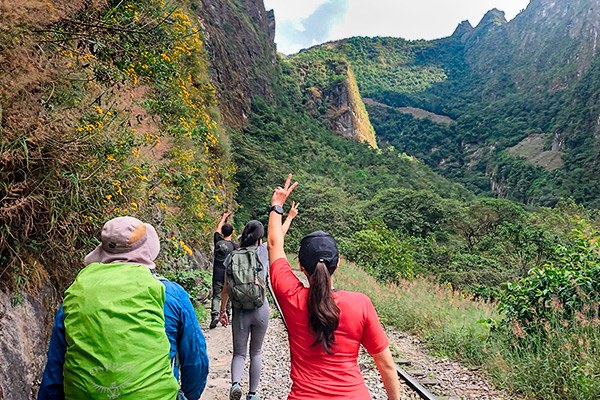
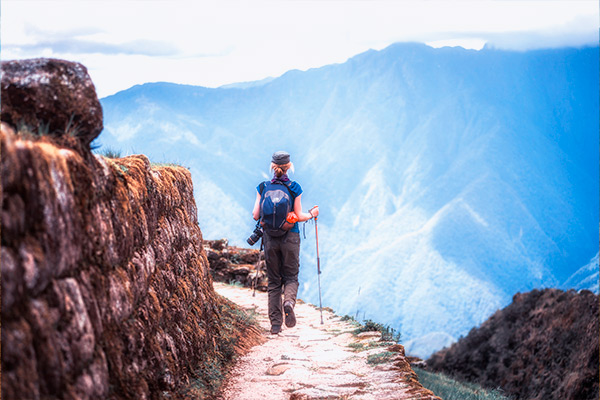
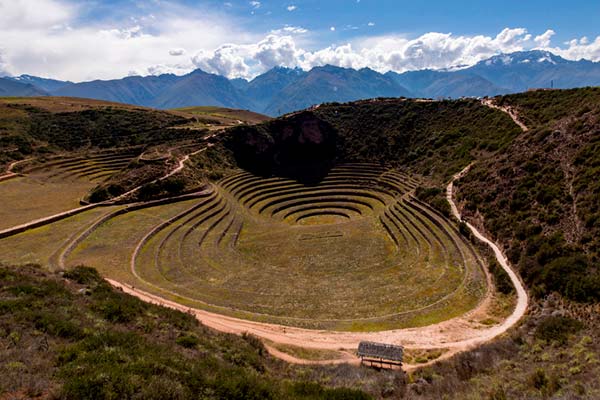
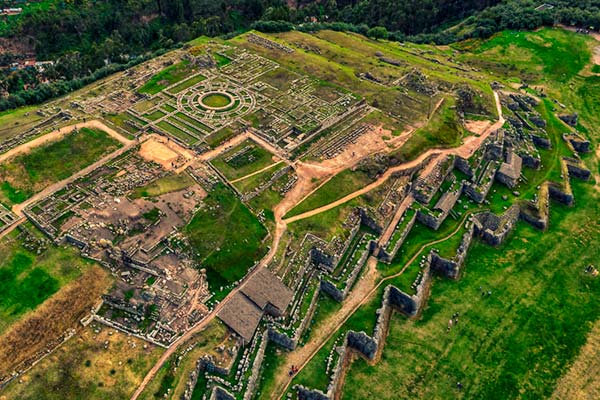
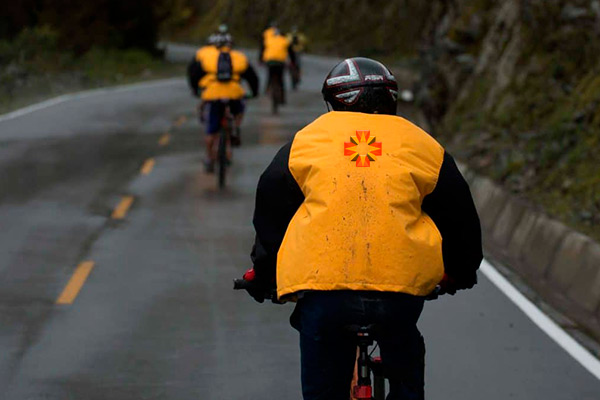
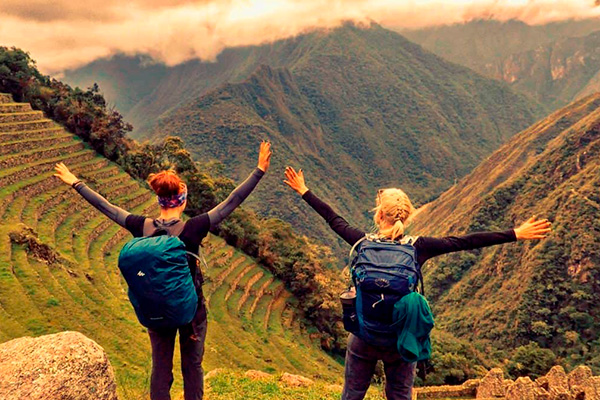
About the entrance ticket to Machu Picchu
It’s highly recommended to book tickets 3–4 months in advance, especially during peak season (May to September). You can purchase tickets through the official website: tuboleto.cultura.pe. There are different ticket types, each offering a unique experience: Machu Picchu Only: Access to the main archaeological site. Machu Picchu + Huayna Picchu: Includes access to Machu Picchu and a climb to Huayna Picchu Mountain (only 400 daily spots available). Machu Picchu + Mountain: Entry to Machu Picchu and Machu Picchu Mountain climb. Machu Picchu is open daily from 6:00 AM to 5:00 PM. Visitors must enter within their assigned time slot, starting from 6:00 AM until 2:00 PM (every hour). The maximum stay for most tickets is 4 hours. If you have a mountain ticket, you can stay for up to 6 hours. It is mandatory to. enter Machu Picchu with an official guide. Groups can have up to 16 people per guide. You can hire a guide at the entrance or book one through a travel agency in advance. To enter Machu Picchu you must have: * A printed copy of your ticket. * Your original passport or ID (must match the details used during ticket purchase). * Official tickets from the Peruvian Ministry of Culture are non-refundable and non-transferable.

